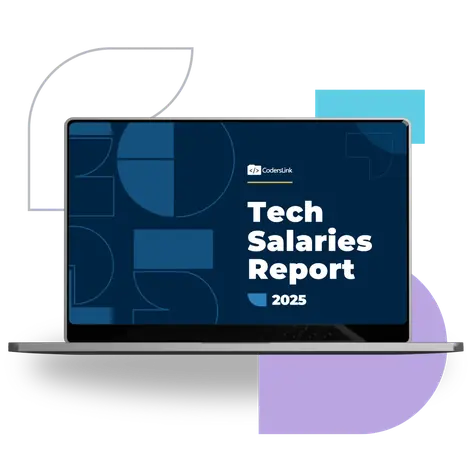
It’s true. Hiring tech talent in Mexico is a solid deal, but there are legal implications and regulations that companies must contend with when taking on foreign employees. Labor regulations in Mexico might often deter companies for looking at the country as a possible tech talent pool, but it doesn’t have to be.
When nearshoring to Mexico, the most common legal questions revolve around labor laws, benefits, and IP. We review some of the most common concerns and touch briefly on how CodersLink helps mitigate these challenges.
Nearshoring to Mexico Begins in the Mid 20th Century and Takes a New Shape in the 21st
Nearshoring to Mexico is not a new phenomenon. American companies have outsourced work to their Southern neighbor for decades. This primarily started with manufacturing, as countries like the U.S., Japan, and Germany moved plants and factories to the Mexican heartland. Giants such as General Motors, Honeywell, and IBM have been in the country since the mid-20th century.
Similarly, companies like Kodak, Motorola, and Hewlett-Packard have installed manufacturing operations in what is now known as Mexico’s Silicon Valley— Guadalajara, Jalisco. These companies helped foster a tech ecosystem that has flourished in recent years. As the 2000s rolled around, tech companies began expanding their operations, setting up centers in cities like Guadalajara, Mexico City, and Monterrey. The Mexico IT industry grew exponentially, spawning a movement of tech enthusiasts and new talent.
Remote work opens up possibilities. It allows businesses to reach into new and diverse talent pools, search for specialized talent, and maintain flexibility within their company. Today, in many sectors like tech, it’s all about remote first. Tech talent loves remote and flexible work, and those trends are here to stay.
#1 What Do I Need to Hire a Developer in Mexico?
There are really two options, one is to establish a legal entity in the country and set up the business. The other is to work with an Employer of Record. For companies that are looking to expand operation centers in Mexico, it’s recommended to begin with an Employer of Record and slowly transition into establishing the legal entity in the country.
An Employer of Record or EOR is a legal entity that handles financial and legal responsibilities. In other words, the EOR handles administrative tasks such as payroll, administration of employee benefits, and tax documentation. CodersLink, for example, is a legal Employer of Record that handles these responsibilities for companies hiring tech talent in Mexico. What does this do? Not only does it provide you with a legal way to hire employees in Mexico, but it acts as a safeguard. An EOR mitigates risk by allowing employers to tap into new talent pools without the upfront investment and headache of opening up a legal entity.
#2 What’s Next After Finding an Employer of Record?
Once you have found an Employer of Record, they facilitate the hiring process by taking care of the legal aspects of hiring in the local market. As an EOR, CodersLink not only takes care of the administrative duties, but it specializes in finding candidates that fit your needs.
Different markets operate differently and having someone on the ground advising you and guiding you through those differences improves hiring outcomes for your company. Mexico is a different market and while it has qualified and elite tech talent the market has its unique characteristics.
#3 How Does Mexico Tax and Regulate Labor?
Just like any country, Mexico has contract requirements, labor regulations, and tax authorities that operate to regulate commerce and the labor market. Mexico, like the United States, has a variety of different deductions and taxes that apply to every worker. These include social security, housing fund (INFONAVIT), Income Tax, and retirement funds. These employment reductions depend, in large part, on how the Federal Labor Law of Mexico categorizes the contract: whether an employee is employed indefinitely, for a specified time, for a specific project, seasonally, for initial training, or during a trial period.
There are also various types of wage agreements in Mexico, some that offer slightly more benefits to workers and that an Employer of Record well-versed in the local market can advise you on.
#4 What Types of Benefits are Offered in Mexico?
The Employer of Record handles all of the benefits, so an employer should be aware of the type of benefits that the EOR offers. Since benefits are an important aspect of hiring and retaining employees, a clear understanding of what your EOR offers and how it stands in comparison to the market standard is essential. In Mexico, there are both mandatory employee benefits and additional employee benefits. Read more about how employers of record have risen to prominence with the explosion of remote work.
Mandatory benefits in Mexico include:
- Vacation days
- Vacation bonus
- Mandatory paid public holidays
- Sunday Premium
- Christmas bonus
- Maternity leave
- Paternity leave
- Seniority premium
- Benefits for voluntary resignation
- Profit-sharing/PTU
- Social security system
- Retirement and housing fund
#5 What are the Different Pay Structures in Mexico?
In the United States, for example, an employee can receive a W-2 or 1099. These different tax forms represent whether the worker is considered an employee or a contractor. There are four different pay schemas in Mexico. They include:
- Salaries and remunerations
- Salaries assimilated to wages
- Professionals fees
- Salaries and remunerations mixed
Each pay structure has different benefits to the worker depending on the arrangement. Salaries assimilated to wages applies to remote workers but does not consider workers direct employees. Freelancers, for example, often use the professional fees/contractors scheme. Learn more about these pay structures in our post about payment schemes.
#6 What are Salaries like in Mexico?
Due to a difference in the cost of living between Mexico and the United States, salaries in Mexico are lower than the average salary in the U.S. Every year, CodersLink does extensive research into the Mexico IT industry and gathers insights in our Tech Salaries Report.
Learn more about how tech salaries compare in Mexico and the U.S. Our recent Mexico Tech Salaries report dives into the salary expectations of entry level, middle, and senior tech professionals.
Nearshoring to Mexico Opens Up Possibilities for Your Company
Avoid legal worries, the EOR provides the peace of mind for you to tap into new and diverse talent pools. Don’t let Mexico employment laws to be an impediment to building a new remote tech team. In the tech industry, remote work has exploded and is here to stay. Build a committed team with talent from Mexico.
Learn more about what we do to help companies grow. Connect with our team today.


